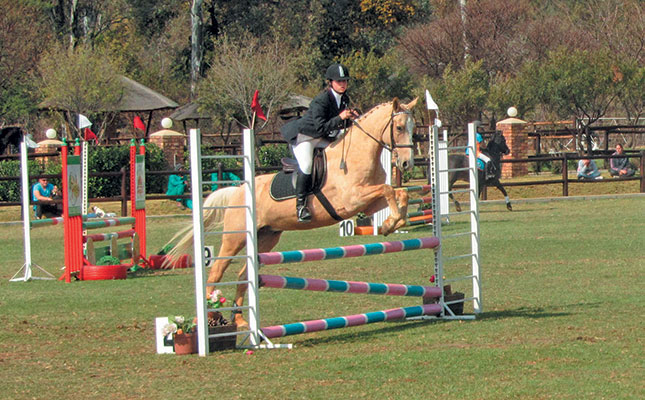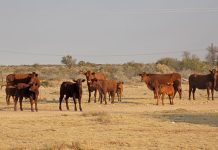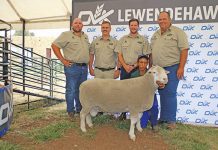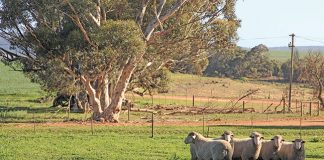
Photo: Dr Mac
A stride is measured from the place where one leg hits the ground to where it hits the ground again at any pace. When a horse jumps a single pole, it theoretically takes off half a stride before the jump and lands half a stride after the jump.
Jumping courses are designed with this 3,66m basic stride in mind, although it is adjusted by course builders depending on the height of jumps and the type of arena footing.
Jumping horses are generally chosen from breeds deriving from the English
Thoroughbred or its ancestor, the Arabian. These horses have been bred for speed over many generations and so have a sloping shoulder and long, flexible fetlocks, resulting in an increased natural stride at the canter and gallop.
Their height, muscular strength and agility are also an advantage when going around corners between jumps at speed against the clock.
Jumping to win means you have to feel each stride as you ride and know when to shorten or lengthen it. Lengthening or shortening the stride is not related to speed.
You can teach yourself to feel stride length at the walk. Set up four long poles equally spaced in the lunging arena, all pointing towards the centre. Essentially, you’re dividing the arena into quarters.
Ride at a walk in ever-decreasing circles (different stride lengths). As you walk the horse over the poles, you can feel when it picks up each of its feet and puts it down.
Towards the centre of the arena, you should be able to step over the poles with one footprint in the middle. This is your horse’s stride length at the walk. Pick up a trot and repeat the exercise.
Generally, the trot stride is longer than the walk stride. You can practise shortening and lengthening the stride by circling inwards towards the centre of the arena and back out again.
Canter
Now you can canter the 20m circle (the diameter of a lunging arena), feeling how the horse lifts its legs over each pole.
Unschooled horses often trip or stumble the first few times you do this, so be careful to sit up and balance yourself well, keeping the horse collected between your legs and hands.
Once the horse is cantering steadily over the four poles, you can ride in a slow spiral, decreasing the circle size from 20m to 15m and back again.
If you can keep your horse at a steady canter without increasing speed, you’re actually increasing and decreasing stride length, ensuring the horse sorts itself out over the poles without stumbling.
Measure
To measure the stride of your horse, you can now put three poles in a straight line along the long side of the arena, initially 2m apart. Again, start at a walk, then switch to a trot.
At a walk, the horse usually takes two strides between the poles and one at the trot. You can then canter the poles; this is a collected canter stride for most Thoroughbreds and warmbloods.
If your horse manages one stride between the poles, increase the distance gradually to 2,5m, 3m, 3,5m and 3,66m.
This exercise not only teaches you to estimate the stride at a canter, but helps you judge when to ask the horse to take off as it approaches a jump.
Dr Mac is an academic, a practising equine veterinarian and a stud owner.












